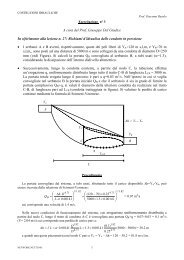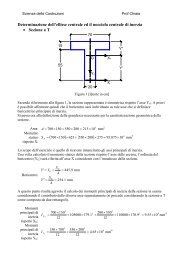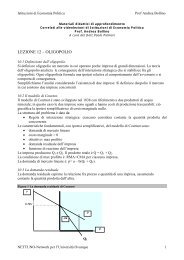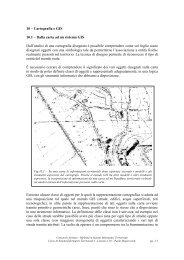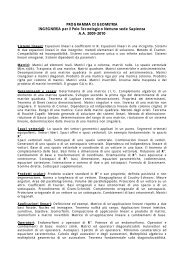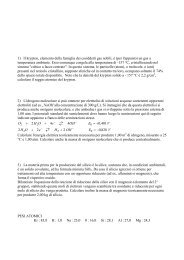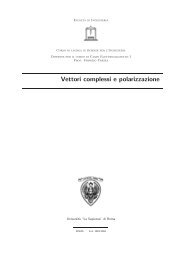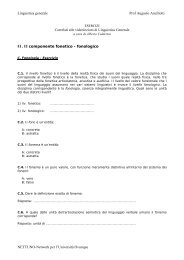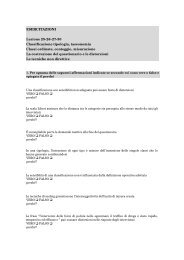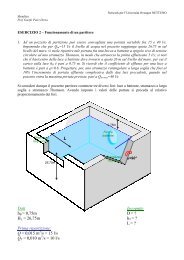La convoluzione tra due segnali - Nettuno
La convoluzione tra due segnali - Nettuno
La convoluzione tra due segnali - Nettuno
Create successful ePaper yourself
Turn your PDF publications into a flip-book with our unique Google optimized e-Paper software.
In questo caso è facile osservare come <strong>tra</strong>slazioni negative conducono ad una <strong>convoluzione</strong><br />
nulla, ma questo risultato si ottiene anche per <strong>tra</strong>slazioni positive e inferiori a t 0 + t 1 .In en<strong>tra</strong>mbi<br />
i casi x(τ − t) e y(t) non sono mai contemporaneamente diversi da 0.<br />
Per valori di τ maggiori di t 0 + t 1 la <strong>convoluzione</strong> non è nulla (Fig.3.3).<br />
e sarà data dalla espressione:<br />
che dà:<br />
e quindi:<br />
A<br />
B<br />
che può essere modificato come:<br />
x( τ-<br />
t)<br />
y(t)<br />
_ t<br />
0 t _<br />
1 t +<br />
0 τ<br />
t<br />
Fig.3.3<br />
Cxy(τ) = AB e -b (t - t 1) e - a(τ - t - t0) dt<br />
t1<br />
- t0+ τ<br />
Cxy(τ) = ABe b t1 + a( t0- τ)<br />
t1<br />
- t0+ τ<br />
e ( a - b) t dt<br />
Cxy(τ) = ABe b t1 + a( t0- τ) 1<br />
( a - b) e (a-b)(- t0 + τ) - e (a-b)t1<br />
Cxy(τ) = AB<br />
(a-b) e-b(τ- t0 - t1 ) -e -a(τ- t0 - t1 )<br />
Nel caso in cui t 0 e t 1 fossero en<strong>tra</strong>mbi nulli si avrebbe il risultato:<br />
Cxy(τ) = AB<br />
(a-b) e-bτ - e -aτ<br />
Si può verificare come la presenza dei termini di ritardo t 0 e t 1 causa una <strong>tra</strong>slazione di t 0 + t 1<br />
della <strong>convoluzione</strong> calcolata per ritardi nulli, come indicato nell'introduzione.<br />
12




